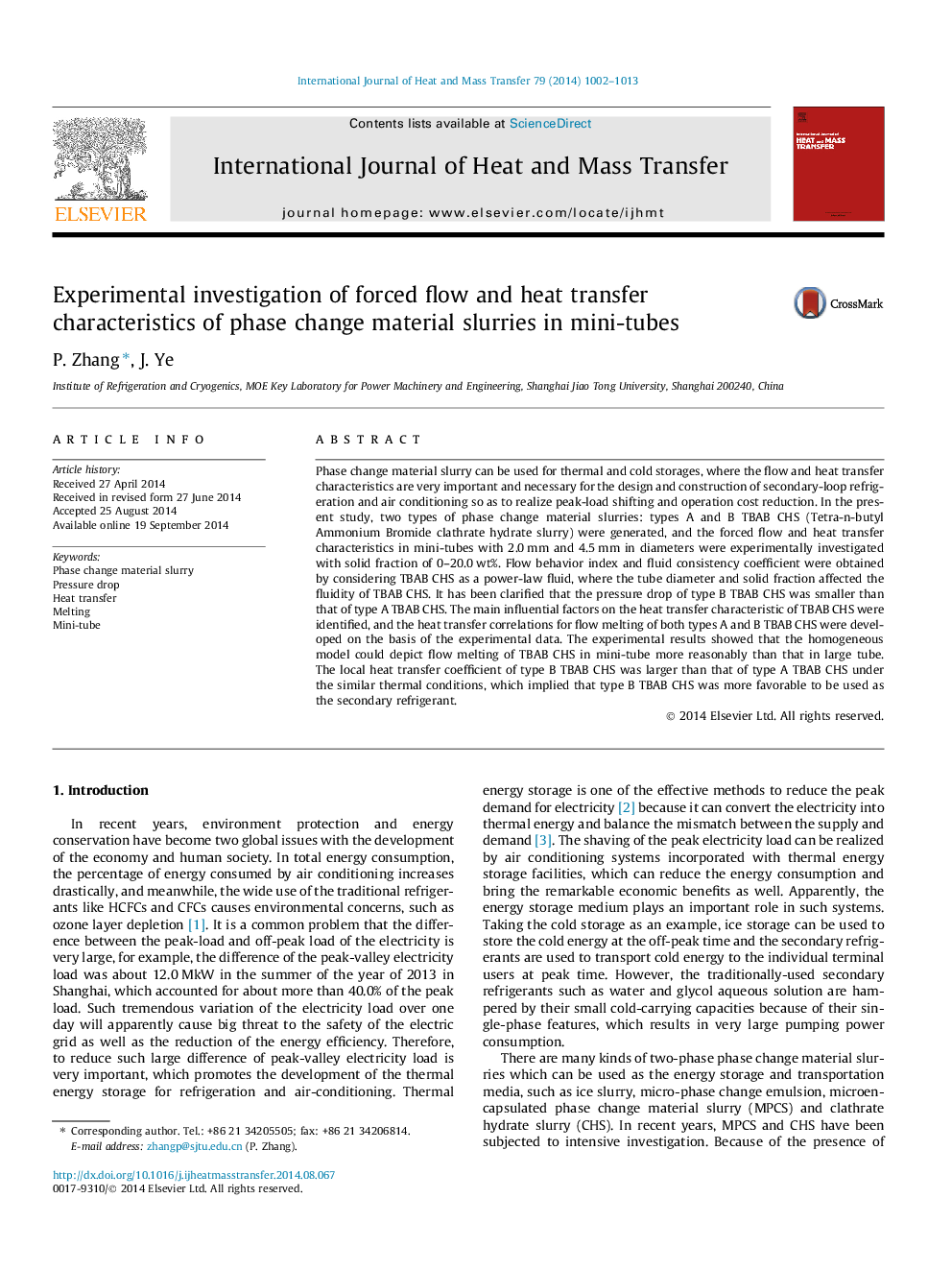| Article ID | Journal | Published Year | Pages | File Type |
|---|---|---|---|---|
| 657469 | International Journal of Heat and Mass Transfer | 2014 | 12 Pages |
Phase change material slurry can be used for thermal and cold storages, where the flow and heat transfer characteristics are very important and necessary for the design and construction of secondary-loop refrigeration and air conditioning so as to realize peak-load shifting and operation cost reduction. In the present study, two types of phase change material slurries: types A and B TBAB CHS (Tetra-n-butyl Ammonium Bromide clathrate hydrate slurry) were generated, and the forced flow and heat transfer characteristics in mini-tubes with 2.0 mm and 4.5 mm in diameters were experimentally investigated with solid fraction of 0–20.0 wt%. Flow behavior index and fluid consistency coefficient were obtained by considering TBAB CHS as a power-law fluid, where the tube diameter and solid fraction affected the fluidity of TBAB CHS. It has been clarified that the pressure drop of type B TBAB CHS was smaller than that of type A TBAB CHS. The main influential factors on the heat transfer characteristic of TBAB CHS were identified, and the heat transfer correlations for flow melting of both types A and B TBAB CHS were developed on the basis of the experimental data. The experimental results showed that the homogeneous model could depict flow melting of TBAB CHS in mini-tube more reasonably than that in large tube. The local heat transfer coefficient of type B TBAB CHS was larger than that of type A TBAB CHS under the similar thermal conditions, which implied that type B TBAB CHS was more favorable to be used as the secondary refrigerant.
